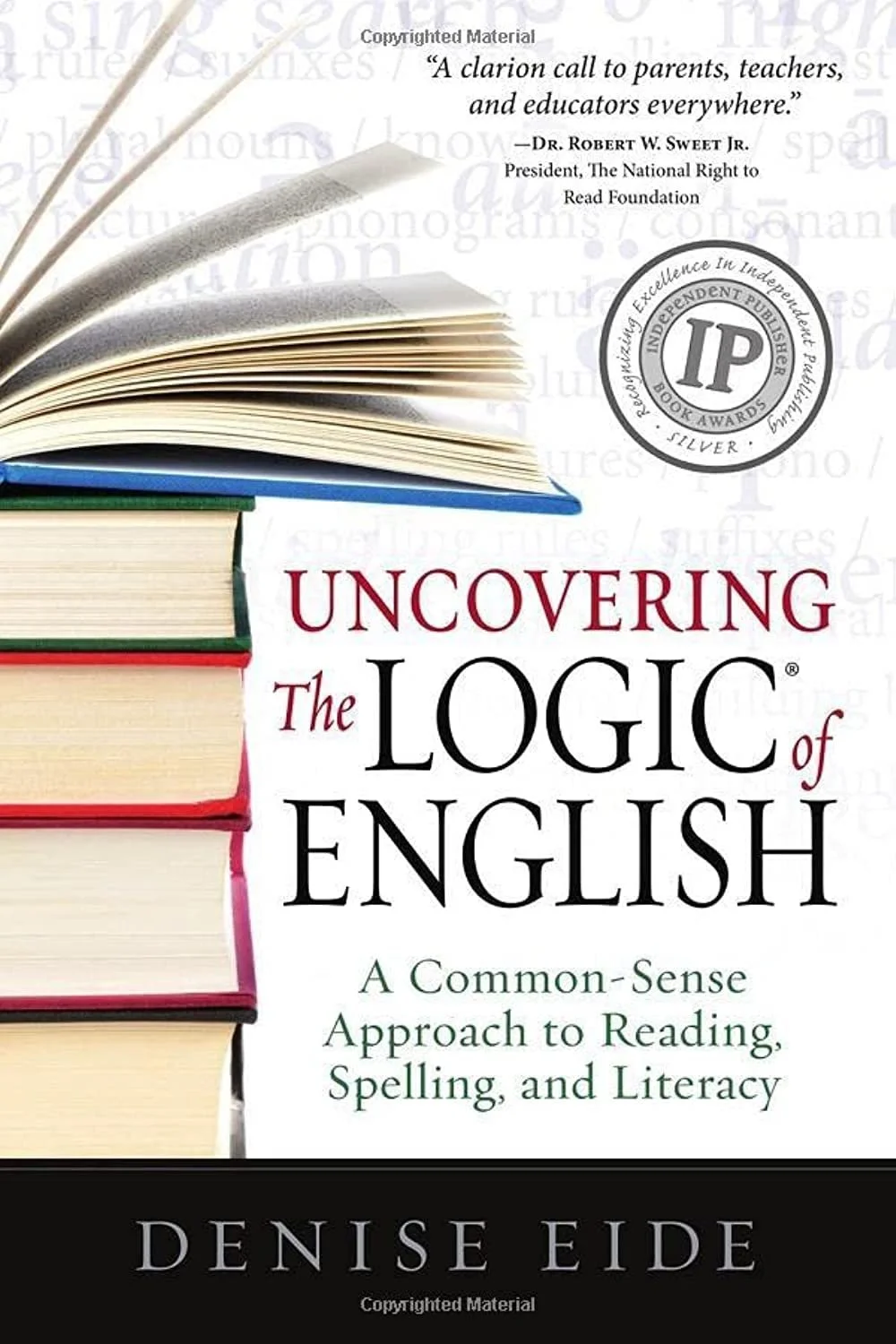Uncovering the Logic of English
Uncovering the Logic of English
by Denise Eide
A relatively succinct and easy-to-follow guide to the rules governing English spelling.
This is not a guide to how to teach spelling, but it will tell you what you need to teach. In a fairly conversational and readable style, it takes you through the rules governing English spelling. While not exciting to read, it is very practical and easy to follow, and it’s helpful if you’re looking for a quick summary of a certain aspect of spelling.
What it’s about
If you’re a non-US reader, you may want to skip the introductory sections on the ‘literacy crisis’.
The main part of the book begins by focusing on graphemes (which Eide calls ‘phonograms’). She provides a helpful guide to where graphemes occur in words, pointing out where these connect to spelling rules e.g. <oi> will not occur at the end of words because <i> is not allowed at the end of English words. The suffixing conventions are described in detail. She also points out examples where the intersection between different spelling conventions can explain what appear to be exceptions (e.g. courageous, where, despite the drop <e> convention, the <e> has to be retained to ensure that <g> keeps its soft /j/ sound). There is also a section highlighting the importance of Latin and Greek roots/bases, and how they link to the meaning of words. In addition, it has a handy summary of spelling rules at the back.
Something to be aware of
When it comes to spelling, teachers should be aware that there are different ‘schools of thought’ as to what counts as a grapheme. This book includes combinations such as <ti> in addiction or <ci> in facial as graphemes. This contrasts with other approaches (e.g. Structured Word Inquiry) that would argue that a grapheme cannot cross a morpheme boundary. For example, according to SWI, <ti> in addiction spans the boundary between the base addict and the suffix -ion, so <ti> can’t be a grapheme. Nevertheless, in this book, these letter sequences are discussed in the context of adding suffixes to a base, so Eide does recognise the importance of teaching morphology to show students the contexts in which these ‘graphemes’ are allowed.
The takeaway
Overall, Uncovering the Logic of English presents the rules that govern English spelling in a very accessible way that will be helpful to many teachers.
Podcast pairing
In the Melissa and Lori Love Reading podcast, Denise Eide discusses why she wrote Uncovering the Logic of English to help teachers (and students) understand that English isn’t a language “riddled with exceptions”, but rather a complex code that can be taught.

